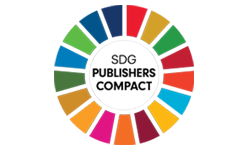This paper explores the roles of technological innovations in the growth of Japan’s motor vehicle industry, mainly from technology spillover perspective from the early 2000s to today. An empirical analysis focusing on business performances, R&D investments, and patent applications taking a noteworthy unique case in Japan was attempted. Empirical analyses on the productivity of patent to technology stock, use of exogenous technologies for their own technological innovation on its Automotive Business Unit elucidated that innovation capabilities, incorporation of exogenous technologies, and profit generation makes a virtuous cycle of continuous technological innovation. Furthermore, we found that the range of technology spillovers is not only expanding along with the development of information communication technology but also superposing itself intricately between organizational (industry– firm–business unit) layers.
Arora, A., Cohen, W.M., Walsh, J.P. (2016). The acquisition and commercialization of invention in American manufacturing: Incident and impact. Research Policy 45 (6) 113-1128. https://dx.doi.org/10.1016/j.respol.2016.02.005.
Bartel, A., Ichniowski, C., Shaw, K. (2007). How does information technology affect productivity? Plant-level comparisons of product innovation, process improvement and worker skills. Quarterly Journal of Economics 122 (4) 1721-1758. https://dx.doi.org/10.1162/ qjec.2007.122.4.1721.
Battke, B. Schmit, T.S., Sitollenwerk, S., Hoffmann, F.H. (2016). Internal and external spillovers–Which kind of knowledge is more likely to flow within or across technologies. Research Policy 45 (1) 27-41. https://dx.doi.org/10.1016/j.respol.2015.06.014.
Belderbos, R., Carree, M., Lokshin, B. (2004). Cooperative R&D and company performance. Research Policy 33 (10) 1477-1492. https://dx.doi.org/10.1016/j.respol.2004.07.003.
Beneito, P. (2006). The innovative performance of in-house and contracted R&D in terms of patents and utility models. Research Policy 35 (4) 502-517. https://dx.doi.org/10.1016/j.respol.2006.01.007
Bergek A., Berggren C., KITE Research Group (2014). The impact of environmental policy instruments on innovation: A Review of energy and AMB industry studies. Ecological Economics 106 112-123. https://dx.doi.org/10.1016/j.ecolecon.2014.07.016.
Bernstein, J. I. (1988). Costs of production, intra- and interindustry R&D spillovers: Canadian evidence. The Canadian Journal of Economics 21 (2) 324-347.
Bloom, N., Schankerman, M., Van Reenen, J. (2013). Identifying technology spillovers and product market rivalry. Econometrica 81 (4) 1347-1393
Chesbrough, H.W. (2003). Open innovation. Massachusetts, MA: Harvard Business School
Christensen, J.F., Olesen, M.H., Kjær, J.S. (2005). The Industrial dynamics of open Innovation -Evidence from the transformation of consumer electronics. Research Policy 34 (10) 1533-1549.
Cortez, M.A.A., Cudia, C.P. (2011). The Virtuous cycles between environmental innovations and financial performance: Case study of Japanese AMB and electronics companies. Academy of Accounting and Financial Studies Journal 15 (2) 31-44.
Crispeels, T., Robert, D., Verbeke, W., Coosemans, T. van Mierio (2016). The development of hybrid electric vehicles: emergence and development of the patent network. World Electric Vehicle Journal 8 (3) 609-620.
Dosi, G., Nelson, R.R. (2010). Technical change and industrial dynamics as evolutionary processes. Handbook of the economics of innovation 1 (1C), 51-127. https://dx.doi. org/10.1016/S0169-7218(10)01003-8
Grillitsch, M. Trippl, M. (2014). Combining knowledge from different soueces, channels and geographical scales. European Planning Studies 22 (11) 2305-2325. http://dx.doi.org/10.1 080/09654313.2013.835793.
Grillitsh, M., Toedtling, F. Hoeglinger C. (2015). Variety in knowledge sourcing, geography and innovation: Evidence from the ICT sextor in Austria. Papers in Regional Science 94 (1) 25-43. http://dx.doi.org/10.1111/pirs.12050.
Hall, L. A., Bagchi-Sen S. (2002). A study of R&D, innovation, and business performance in the Canadian biotechnology industry. Technovation 22 231-244. https://dx.doi.org/10.1016/ S0166-4972(01)00016-5
Kato, T., Nunes, B., Dey, P.K. (2016). Is keiretsu really a source of competitive advantage for Japanese AMB suppliers? Journal of Manufacturing Technology Management 27 (1) 62-81.
Konno T. (2016). Network effect of knowledge spillover: Scale-free networks stimulate R&D activities and accelerate economic growth. Physica A 458 157-167. https://dx.doi. org/10.1016/j.physa.2016.04.005.
Nakagawa, M., Watanabe, C. (2007). Moving beyond organizational inertia as a survival strategy for resource-based industry in a service-oriented economy: Lessons from cross-sector technology spillover in the nonferrous metal industry. Journal of Services Research 7 (1) 7-35.
Nakagawa, M., Watanabe, C., Griffy-Brown, C. (2009). Changes in the technology spillover structure due to economic paradigm shifts: A Driver of the economic revival in Japan’s material industry beyond the year 2000. Technovation 29, 5-22. https://dx.doi.org/10.1016/j. technovation.2008.08.003.
Nakagawa, M., Watanabe, C. (2010). A revival of compound semiconductor material innovation: Strategic technology spillovers in Japan’s nonferrous metal industry in the 2000s.
Nakagawa, M., Watanabe. C. (2010). Innovation dynamics of materials technology: An empirical analysis and recommendation. Information Science Reference Intellectual Capital and Technological Innovation: Knowledge-Based Theory and Practice Eds. P. L. Saez, G. M. de Castro, J. E. N. Lopez, and M, Delgado-Verde Chapter 6,131-151.
Nakamura, M., Negoro, T. (2016). Layered structure of AMB industry by adopting information technologies–Three “Strategic layer models” of AMB industry. Working paper 2016_ RIIM-WP-55, Research Institute of Information Technology and Management, Waseda Univ. in Japanese
Peters, J., Becker, W. (1997). Vertical corporate networks in the German automotive industry.
International Studies of Management and Organization 27 (4) 158-185. http://dx.doi.org/1 0.1080/00208825.1997.11656722.
Ruff, F. (2015). The advanced role of corporate foresight in innovation and strategic management– Reflections on practical experiences from the AMB industry. Technological Forecasting and Social Change 101 37-48. http://dx.doi.org/10.1016/j.techfore.2014.07.013.
Statistics Bureau, Ministry of Internal Affairs and Communications Japan (1994-2015, annually), Report on the survey of research and development. in Japanese
Sumitomo Electric Industries, Ltd. (1994-2015, annually) Financial Statement. in Japanese
Sumitomo Electric Industries, Ltd. (April 2001 – March 2015, monthly) SEI TODAY. in Japanese
Sumitomo Electric Industries, Ltd. (April 2001- March 2015, monthly) SEI WORLD. in Japanese
Veugelers, R. (1997). Internal R&D expenditures and external technology sourcing. Research Policy 26 (3) 303-315. http://dx.doi.org/10.1016/S0048-7333(97)00019-x.
Volpato, G., Stocchetti, A. (2002). The Role of ICT in the strategic integration of the AMB supply-chain. International Journal of AMB Technology and Management 2 (3-4) 239-260
Watanabe, C. (1999). Systems option for sustainable development–Effect and limit of the ministry of international trade and industry’s efforts to substitute technology for energy. Research Policy 28 719-749. https://dx.doi.org/10.1016/S0048-7333(99)00018-9.
Yun, J.H.J., Won, D., Jeong, E., Park, K.B., Yang, J.H., Park, J.Y. (2016) The Relationship between Technology, business model, and market in autonomous car and intelligent robot industries. Technological Forecasting and Social Change 103 142-155. https://dx.doi. org/10.1016/j.techfore.2015.11.016.


